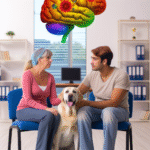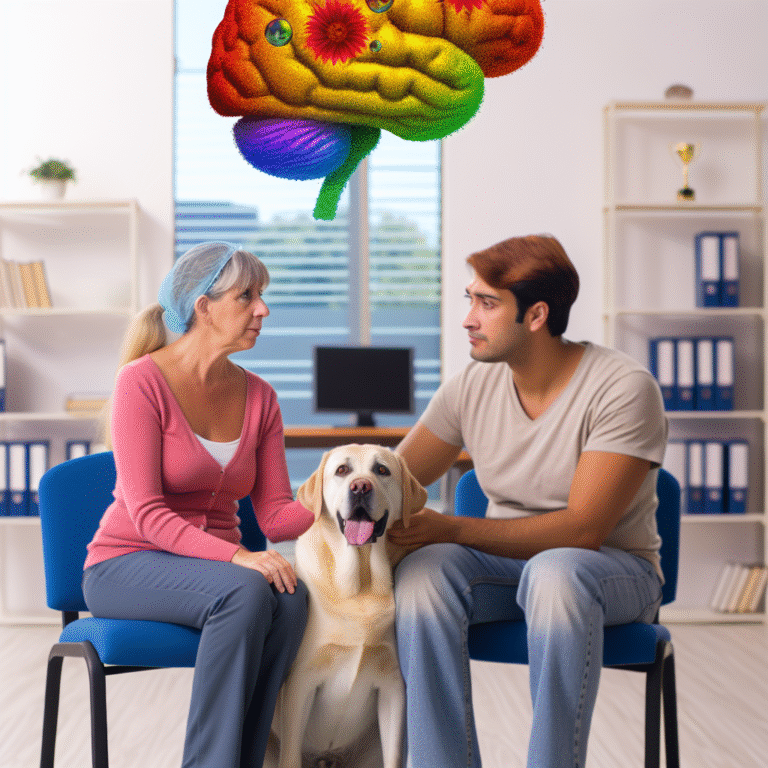
The Comfort of Companionship: Therapy Animals as Essential Allies in Mental Health Recovery
Introduction
Imagine walking into a clinical therapy room and instead of a sterile, intimidating environment, you’re greeted by the soft, wagging tail of a golden retriever or the gentle purr of a cat. It sounds comforting, doesn’t it? In an increasingly fast-paced world, where mental health challenges are becoming more prevalent, the role of therapy animals has gained significance. The Comfort of Companionship: Therapy Animals as Essential Allies in Mental Health Recovery highlights the profound impact these furry friends can have on emotional well-being and psychological healing.
Therapy animals provide more than just companionship; they offer unwavering support, emotional connection, and unique therapeutic benefits that can greatly enhance mental health recovery. Let’s explore how these companions contribute to healing journeys, support diverse therapeutic modalities, and transform lives.
The Therapeutic Bond: How Animals Enhance Mental Health
Understanding the Role of Therapy Animals
Therapy animals are specifically trained to provide comfort and support to individuals dealing with mental health issues. Unlike service animals, which perform specific tasks for individuals with disabilities, therapy animals serve as emotional support, facilitating the therapeutic process.
The Psychology Behind Animal Interaction
Various psychologists have studied how human-animal interactions can boost mood and reduce anxiety. One notable study published in the Journal of the American Veterinary Medical Association indicated that petting animals can lower stress levels by reducing cortisol, the stress hormone, and increasing oxytocin, also known as the “bonding hormone.” This physiological change can lead to a decreased sense of loneliness and anxiety, emphasizing The Comfort of Companionship: Therapy Animals as Allies in Mental Health Recovery.
The Healing Power of Touch
How Physical Interaction Affects Mental Health
The comfort of physical interaction with therapy animals, such as petting or cuddling, can evoke a sense of calm. This tactile stimulation brings immediate relief for many individuals suffering from anxiety disorders, PTSD, or depression. For example:
Case Study 1: Hope’s Journey
Hope is a 34-year-old military veteran who struggled with PTSD. After incorporating regular sessions with a therapy dog named Max, she reported significant improvements in her symptoms. Through gentle play and interaction, Hope experienced reduced anxiety and increased emotional stability, showcasing just how vital The Comfort of Companionship: Therapy Animals as Allies in Mental Health Recovery can be for individuals like her.
| Key Indicators | Before Therapy | After Therapy |
|---|---|---|
| Anxiety Level (scale of 1-10) | 9 | 4 |
| Frequency of Nightmares (per week) | 5 | 1 |
| Overall Mood Rating (scale of 1-10) | 3 | 7 |
The Science of Attachment
The bond formed with therapy animals often falls under the umbrella of attachment theory. Patients develop emotional attachments to their therapy animals, learning to express their feelings and vulnerabilities in a safe environment.
The Diverse Spectrum of Therapy Animals
Beyond Dogs and Cats
While dogs are the most common therapy animals, various other animals have also shown significant therapeutic benefits.
Horses: Equine therapy has gained traction as an effective treatment method for emotional regulation.
Rabbits and Guinea Pigs: Smaller creatures can also be selected for their calming nature, especially for individuals with severe anxiety.
- Cats: Their independent yet affectionate demeanor can provide solace to individuals who may feel overwhelmed by more energetic animals.
Case Studies: Varied Animal Interactions
Case Study 2: Equine Therapy
A program involving equine therapy helped a group of at-risk teens develop crucial life skills. Participants learned emotional regulation and teamwork while bonding with horses, demonstrating the adaptability of The Comfort of Companionship: Therapy Animals as Allies in Mental Health Recovery across demographics.
| Emotional Skills | Pre-Therapy | Post-Therapy |
|---|---|---|
| Trust Issues | High | Moderate |
| Emotional Awareness | Low | High |
| Communication Skills | Low | High |
How Therapy Animals Are Integrated into Treatment Plans
Structured Therapy Programs
Many mental health professionals are incorporating therapy animals into their treatment plans, recognizing the unique value they bring to traditional therapeutic approaches.
- Cognitive Behavioral Therapy (CBT) integrates therapy animals by providing a supportive atmosphere while enabling patients to confront their anxieties.
- Group Therapy: In group settings, therapy animals can diffuse tension and foster camaraderie among participants, making them feel more comfortable sharing their stories.
Training and Certification for Therapy Animals
Therapy animals undergo specific tasks and behaviors training. Organizations like Pet Partners and Alliance of Therapy Dogs provide accreditation and certification processes, ensuring that therapy animals can reliably assist in mental health recovery efforts.
Evidence Supporting Therapy Animal Efficacy
Scientific Backing
Numerous research studies underscore the effectiveness of therapy animals in mental health recovery. A systematic review published in Frontiers in Psychology examined multiple studies, finding overwhelming evidence supporting improved outcomes in patients interacting with therapy animals, reinforcing The Comfort of Companionship: Therapy Animals as Allies in Mental Health Recovery.
Meta-Analysis Table
| Study | Population | Findings |
|---|---|---|
| Anderson et al. (2015) | Adults with Anxiety | 70% reported reduced anxiety levels. |
| Hergovich et al. (2019) | Children with ADHD | Improvements in focus and attention. |
| O’Haire (2018) | Military Veterans | Experienced significant PTSD symptom reduction. |
The Human-Animal Connection: Deeper Insights
Emotional and Psychological Benefits
The companionship of therapy animals fosters emotional healing through loyalty, non-judgment, and unconditional love. Patients often report feeling more relaxed and secure, which allows for deeper emotional exploration during therapy sessions.
A Safe Space for Vulnerability
For many individuals grappling with trauma or mental health issues, the presence of a therapy animal can feel less intimidating than traditional therapeutic settings. This safe space encourages open communication, essential for effective therapy.
Addressing Loneliness
The companionship of therapy animals provides invaluable support for those experiencing loneliness. As social creatures, many individuals find it challenging to connect with others but can more easily bond with therapy animals, mitigating feelings of isolation.
Conclusion
The Comfort of Companionship: Therapy Animals as Essential Allies in Mental Health Recovery serves as a life-changing modality for many people. These remarkable animals provide emotional stability, physiological benefits, and encouragement for personal growth, proving indispensable in holistic treatment plans.
Every time we interact with therapy animals, we unlock a profound avenue of healing that not only improves mental health outcomes but also fosters meaningful relationships in our lives.
Takeaway
If you or someone you know is struggling with mental health challenges, consider exploring the option of therapy animals. They could be the compassionate allies that lead you on a path to recovery, offering a unique blend of comfort and companionship that you might never have expected.
FAQs
1. What types of animals can be classified as therapy animals?
Therapy animals can include dogs, cats, horses, rabbits, and even exotic species, provided they are trained for therapeutic roles.
2. How can I find a certified therapy animal program near me?
You can search for programs through organizations like Pet Partners, American Humane, or the Alliance of Therapy Dogs to find certified professionals.
3. Can therapy animals help with specific mental health conditions?
Yes, therapy animals have been shown to assist with various conditions like PTSD, anxiety, depression, and autism spectrum disorders.
4. Do therapy animals live with the patients they help?
Therapy animals often work in clinical settings but may also be integrated into living arrangements, depending on the individual’s needs and therapy plan.
5. How do therapy animals differ from emotional support animals?
Therapy animals are trained to provide comfort in therapeutic settings, while emotional support animals do not require specific training and offer general emotional comfort to their owners.
The role of therapy animals in mental health recovery is an essential conversation that deserves to be embraced within the broader context of therapeutic practices. Let’s continue to shine a light on their capabilities to transform lives—one wag, purr, and nuzzle at a time.













